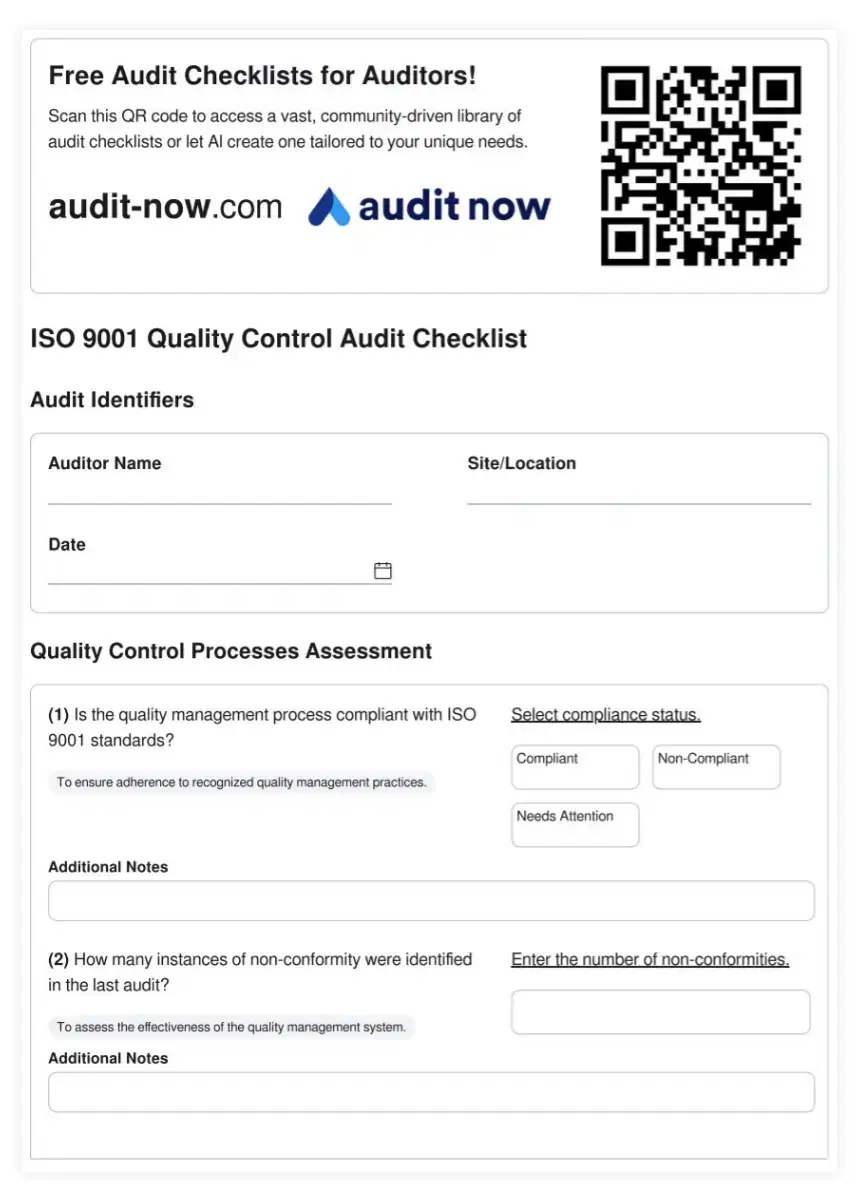REACH Compliance: Safeguarding Health and Environment in the EU

Featured Checklist

REACH Compliance Audit Checklist
The REACH Compliance Audit Checklist is an essential tool for chemical companies to ensure adherence to the European Union's Registration, Evaluation, Authorization, and Restriction of Chemicals (REACH) regulation. This comprehensive checklist addresses key compliance areas, helping businesses identify gaps, mitigate risks, and maintain regulatory compliance. By systematically reviewing REACH requirements, companies can protect human health and the environment while avoiding costly penalties and reputational damage.
Understanding REACH Regulation
REACH (Registration, Evaluation, Authorization, and Restriction of Chemicals) is a comprehensive European Union regulation aimed at protecting human health and the environment from the risks posed by chemicals. Implemented in 2007, REACH places the responsibility on companies to manage the risks associated with the chemicals they manufacture, import, or use in their products. This regulation applies to all chemical substances used in industrial processes as well as in our day-to-day lives, such as those found in cleaning products, paints, clothes, furniture, and electrical appliances.
Key Objectives of REACH
The primary goals of REACH are to ensure a high level of protection for human health and the environment, promote alternative methods for assessing hazards of substances, and enhance innovation and competitiveness of the EU chemicals industry. By requiring companies to gather information on the properties and hazards of substances they use, REACH aims to improve the safe handling of chemicals throughout their lifecycle. This regulation also encourages the substitution of hazardous substances with safer alternatives, fostering innovation in the chemical industry.
REACH Compliance Process
Complying with REACH involves several steps for companies dealing with chemicals in the EU market. First, companies must identify and manage the risks linked to the substances they manufacture and market in the EU. They are required to demonstrate how the substance can be safely used and communicate risk management measures to users. If the risks cannot be managed, authorities can restrict the use of substances in different ways. In the long run, the most hazardous substances should be substituted with less dangerous ones.
Core Audit Requirements & Importance of Checklists
Auditing for REACH compliance is crucial for companies to ensure they meet the regulation's requirements and avoid potential penalties. Core audit requirements include verifying substance registration, checking safety data sheets, ensuring proper communication along the supply chain, and confirming compliance with authorization and restriction requirements. Checklists play a vital role in this process by providing a structured approach to assess compliance. They help auditors systematically review all aspects of REACH, ensuring no critical elements are overlooked. Effective checklists cover areas such as substance inventory, registration status, safety data sheet management, and downstream user obligations. By using comprehensive checklists, companies can identify gaps in their REACH compliance and take corrective actions promptly.
Find Checklists
Discover ready-made checklists aligning with REACH.
Discover Checklists
Impact on Different Industries
REACH has far-reaching implications across various industries, affecting not only chemical manufacturers but also downstream users of chemicals. The automotive industry, for instance, must ensure that all components comply with REACH requirements. The textile sector needs to be vigilant about restricted substances in fabrics and dyes. Electronics manufacturers must track and report the presence of substances of very high concern (SVHCs) in their products. Even the packaging industry is affected, as it must comply with REACH regulations for inks, adhesives, and other materials used in packaging production. This wide-ranging impact underscores the importance of REACH compliance across the entire supply chain.
Benefits and Challenges of REACH Compliance
Adhering to REACH regulations offers several benefits to companies and society at large. It promotes safer use of chemicals, reduces environmental pollution, and enhances consumer confidence in products. REACH compliance can also open up new market opportunities, particularly for companies developing safer alternatives to hazardous substances. However, compliance also presents challenges, especially for small and medium-sized enterprises. These include the costs associated with testing and registering substances, the complexity of the registration process, and the need for continuous monitoring of regulatory updates. Despite these challenges, the long-term benefits of REACH in terms of health, environmental protection, and sustainable business practices are significant.
Future Trends and Developments
As REACH continues to evolve, several trends are shaping its future implementation. There is an increasing focus on the circular economy, with efforts to align REACH with waste and product policies to support recycling and reuse of materials. The regulation is also adapting to address emerging concerns such as endocrine disruptors and nanomaterials. Additionally, there's a growing emphasis on improving the quality and transparency of registration dossiers. Companies are expected to keep their dossiers up-to-date and provide more detailed information on the safe use of chemicals. These developments highlight the dynamic nature of REACH and the need for businesses to stay informed and adaptable in their compliance strategies.
In conclusion, REACH plays a crucial role in safeguarding human health and the environment in the EU. While compliance can be complex, it is essential for companies operating in or exporting to the EU market. By understanding the regulation's requirements, implementing robust compliance processes, and staying abreast of developments, businesses can not only meet their legal obligations but also contribute to a safer, more sustainable future. For those seeking to enhance their REACH compliance efforts, utilizing comprehensive audit checklists and staying informed about the latest regulatory updates are key steps towards ensuring ongoing compliance and success in the EU market.
Most Popular 5 REACH Checklists
REACH Substance Registration Audit Checklist
REACH Downstream User Obligations Audit Checklist
REACH Compliance Audit Checklist